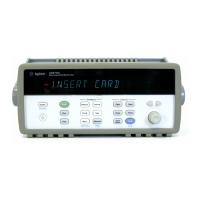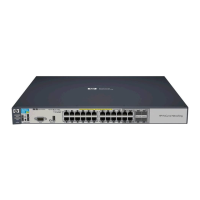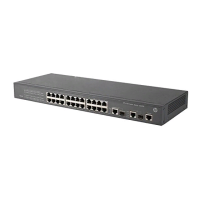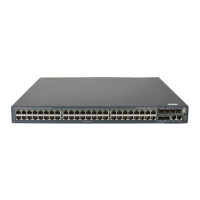Making Strain Gage Measurements A Wheatstone bridge is
commonly used to enable instruments with low-sensitivity measuring
capabilities to measure small resistance changes common in strain
measurements. Instruments with high-resolution resistance measuring
capabilities, like the HP 34970A internal
DMM, can directly measure
small resistance changes with high precision and linearity. You should
also use the 4-wire resistance method when measuring strain gages to
eliminate system cabling errors.
An initial, unstrained, gage resistance measurement is used as the
reference (R
0
) measurement from which strain (∆R / R
0
) is measured.
For best results, you should perform this reference measurement after
the strain gage has been mounted to the test body. The table below
shows the resistance changes corresponding to 1
µε strain for common
gage factor and unstrained gage resistance values.
Strain GF R
0
D
R
DMM Sensitivity
1
µε
2.0 120Ω 0.24 mΩ 0.1 mΩ (0.4 µε)
1
µε 2.0 350Ω 0.70 mΩ 1.0 mΩ (1.4 µε)
1
µε 2.0 1000Ω 2.0 mΩ 1.0 mΩ (0.5 µε)
Using the Mx+B scaling function with the equations shown below will
allow you to display results directly in strain on the HP 34970A
front-panel display. You can use a custom measurement label to display
readings in “uE” (micro-strain) directly. The instrument will automatically
add the micro (“u”) prefix based upon actual calculated values. For more
information on scaling, see page 119.
M =
1
GF
x R
0
B =
−
1
GF
Temperature Effects The resistive element of a strain gage will
produce a resistance change
∆R due to measured strain as well as
changes in gage temperature. This will create an “apparent” strain
change which is undesirable. A second gage of similar type can be used
to detect temperature changes and thus remove this error source.
You should mount the second gage in close proximity and at 90
° to the
first gage, thus responding to local temperature changes but rejecting
strain changes. Subtracting measurements from the second gage will
remove any undesirable strain errors.
8
Chapter 8 Tutorial
Measurement Fundamentals
375

